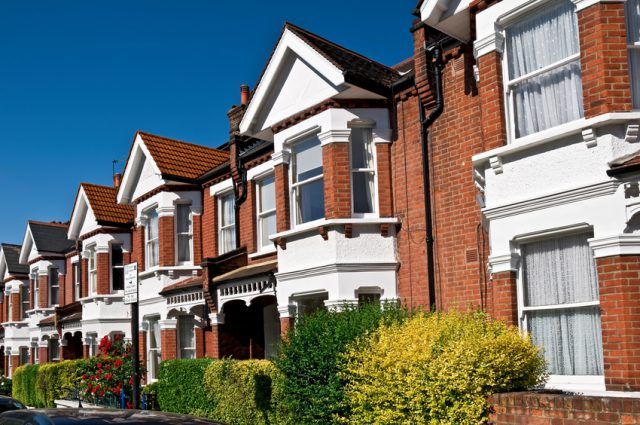The latest Royal Institution of Chartered Surveyors (RICS) Residential Market Survey, for June 2017, shows that uncertainty is stifling housing market sentiment among respondents.
House price growth
The report points to a further deceleration in house price growth at a headline level, although this masks significant regional variations.
Meanwhile, the more cautious tone of surveyors regarding sales activity shows little signs of turning, with the net balances for new buyer enquiries, new instructions and agreed sales still stuck in negative territory.
Importantly, this is now also being reflected in the 12-month sales expectations indicator, with the net balance reading now sitting at its lowest level since the immediate aftermath of the EU referendum.
The number of surveyors reporting house price growth eased from 17% more to 7% more in June, which is the softest reading since last July. However, this loss of momentum is not reflective of the underlying trend in all parts of the country.
London data continues to return the lowest levels of house price inflation. Alongside this, price growth is now more subdued in both the South East and East Anglia, while the north continues to show little change from recent reports.
There are, however, notable exceptions, with 41% more surveyors in Northern Ireland experiencing house price growth, 38% more in Wales, and 33% and 28% in the West Midlands and North West respectively.
Property sales

Uncertainty is Stifling Housing Market Sentiment, Shows Latest RICS Survey
Once again, surveyors recorded a decline in newly agreed property sales in June. This is the fourth consecutive negative reading, reflecting both a lack of housing stock coming onto the market and a more cautious stance from buyers over recent months.
Significantly, the number of surveyors reporting new instructions also fell again for the 16th month in a row. Against this backdrop, average stock levels have slipped to a new record low.
Uncertainty in the market
The June survey also included additional questions in an attempt to gather a deeper insight into the generally flat trend in activity. At a national level, 44% of respondents identified domestic political uncertainty as the greatest factor explaining the current state of the housing market.
This compares to 27% who highlighted Brexit as the most important factor affecting the landscape.
Importantly, most parts of the UK, apart from the capital, showed a fairly similar pattern to the headline numbers. Interestingly, in London, the political climate, Brexit and the recent changes to Stamp Duty were all equally cited as contributing to the slowdown in the market.
Looking ahead
In the near term (the next three months), property sales are expected to remain broadly stable, with 8% more surveyors anticipating an increase in transactions across the country – rather than a fall. This is little changed on the +6% recorded in May.
Meanwhile, there is now a little more caution in terms of the outlook for property sales growth over the next 12 months, with the number of surveyors expecting increases dropping from 26% more to just 12% – the lowest result since June last year.
Lettings market
In the lettings market results, tenant demand edged up slightly over June, but new landlord instructions continued to decline.
Rent price growth expectations rose in June, but the underlying picture appears consistent, with rents at a headline level continuing to increase at roughly the same pace as in recent quarters.
Next five years
Looking forward to the next five years, surveyors reported some moderation in perception of where house prices and rents are likely to go.
For house prices, surveyors are expecting to see an average annual increase of 3.2% in each of the next five years. Meanwhile, for rents, the comparative figure is 3.6%.
Although these projections remain above the likely rise in average earnings over the same period, they are lower than recent readings, suggesting that affordability issues may be impacting surveyors’ expectations.
The CEO and CO-Founder of buy-to-let specialist Landbay, John Goodall, comments on the latest RICS survey: “Political uncertainty is always going to give people pause for thought when considering big transactions, so it’s not a huge surprise to see that fewer people have bought and sold houses over the summer. Beyond the political dimension, rising inflation and slowing wage growth are also dampening the purchasing power of aspiring homeowners, something which looks like it could be hitting demand, taking the edge off house price growth.
“With Brexit negotiations ongoing, and buyers facing a tighter set of borrowing criteria, we’re likely to see slightly lower levels of housing demand over the short to medium-term. This puts extra emphasis on the buy-to-let market, which needs to house all of those that are yet to step onto the property ladder. If demand in the rental market rises as a result, we could see rents begin rising, and even catch up with inflation, before the year is out.”
Peter Williams, of the Intermediary Mortgage Lenders Association (IMLA), adds: “For another consecutive month, RICS’ survey points to a housing market gradually losing momentum, with members reporting dwindling numbers of enquiries, instructions and sales. Despite an extended period of record low interest rates going some way to ease affordability, falling real incomes set against a backdrop of heightened political uncertainty are beginning to weigh the market down, with a slowdown in London and the south already leading the way.
“However, while activity in the housing market may be beginning to slow, long-term price growth will be supported by supply-side shortages across the country and high customer demand. Borrowers with more modest incomes will also be supported by the greater availability of higher loan-to-value products, which make up for limited deposits. Alongside further commitments to the construction of housing of all tenures, ensuring ready access to mortgage finance should be a key objective of Theresa May’s new Government over the course of the coming year.”










